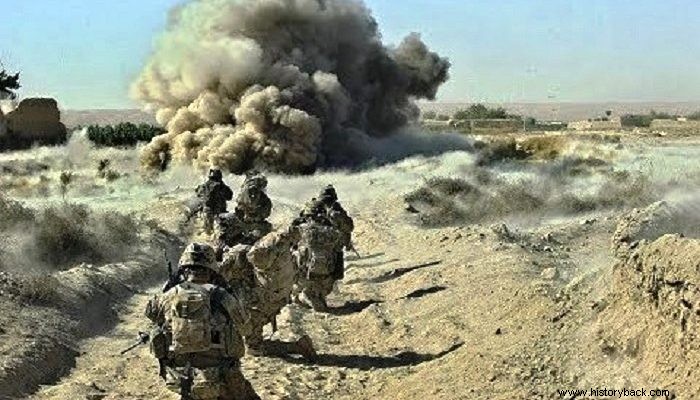
2006 was also an anxious year for Western soldiers fighting in Afghanistan. In the region of Panjwai, southwest of Kandahar, near the border with Pakistan, there was much fighting during the spring and summer.
Operations in the area were resumed in the early autumn and the Princess Patricia's Canadian Light Infantry (PPCLI) and Royal Canadian Regiment (RCR) were particularly distinguished in them. The Taliban had already been gathering forces around the important city of Kandahar since 2004 with the aim of blocking it. Kandahar province borders Pakistan and is an ideal place for guerrilla warfare with its hundreds of settlements, mountains and valleys.
At the end of 2005 the Taliban had intensified their activity throughout the country with ambushes and bombings. At the same time, in the area of Panjwai, only 60 km from Kandahar, the Taliban began to create a strong base.
Aerial reconnaissance showed that the Taliban did not intend to retreat but would fight to defend their strongholds. And indeed the Taliban had established a regular front about 100 km long with fighting positions, heavy weapons positions, communication trenches, warehouses and command posts. About 12,000 Taliban were stationed in these positions.
While this was happening two Canadian divisions moved into the area to replace American forces. The Canadians did not have sufficient information about the adversary and soon after they settled in the area, their advanced positions were under constant attack by the Taliban who were supported by mortar and artillery fire.
The Talymans launched frenzied attacks but for the moment the Canadians held out. Canadian Commander-in-Chief Rick Hillier, known as "Uncle Rick" , pressured NATO to launch an immediate, strong counteroffensive to neutralize the Taliban in the region and relieve pressure on its troops. In the meantime, the new Canadian Prime Minister Harper decided to strengthen the Canadian forces in Afghanistan by sending supplies and reinforcements, including the famous – now armored – Fort Garry Horse Regiment.
Attack
Following this, it was decided to carry out an attack against the Taliban under the code name "Operation Medusa". The Canadian units (two infantry battalions, one tank battalion), would attack the center of the Taliban defensive position with the aim of breaking it and then flanking the enemy units.
The Canadian flanks would be supported by small detachments of British marines, American SEALS and a few Dutch soldiers. At dawn on September 2, 2006, the attack began. Supported by more than 100 aircraft and helicopters and the corresponding artillery, the Canadians broke through the enemy position with the first strike despite a fanatical enemy reaction.
At least 200 Taliban killed and 80 captured in this phase which, however, was accompanied by the crash of a British Nimrod MR2 surveillance aircraft and the death of its 14-member crew. Other sources say the British were aboard a Chinook helicopter that was shot down by the Taliban.
Particularly stiff resistance was met by C Company of the RCR who had four killed, nine wounded and several of their vehicles destroyed in the clash to capture fortified villages in the Pasmul district . Fighting continued fiercely as the Canadians tried to encircle Taliban forces on either side of the breach they had achieved.
However, on September 4, the Canadians were accidentally hit by American aircraft. One soldier was killed and at least 30 were wounded, five seriously. In response, at least 51 Taliban were killed by aircraft fire, as well as by Canadian and Dutch artillery. The Canadians estimated that they had trapped at least 700 Taliban.
Another 40 Taliban, as well as at least 10 civilians, were killed the next day by NATO aircraft and artillery. The Canadians had five wounded by mortar fire. In the following days, the battle flared up again. As a result, another 92 Taliban were killed, many of whom were victims of Canadian snipers.
In the following days, encirclement efforts continued. The Taliban responded with a diversionary attack in Farah province, but to no avail. The Canadians continued the attack until September 17th with the Taliban abandoning their strongholds and retreating.
The Canadians had 14 killed and over 40 wounded in the operation. Also lost were an American, a Dutchman, three Afghans and the aforementioned 14 Britons. The Taliban had at least 2,000 dead and 400 prisoners.
